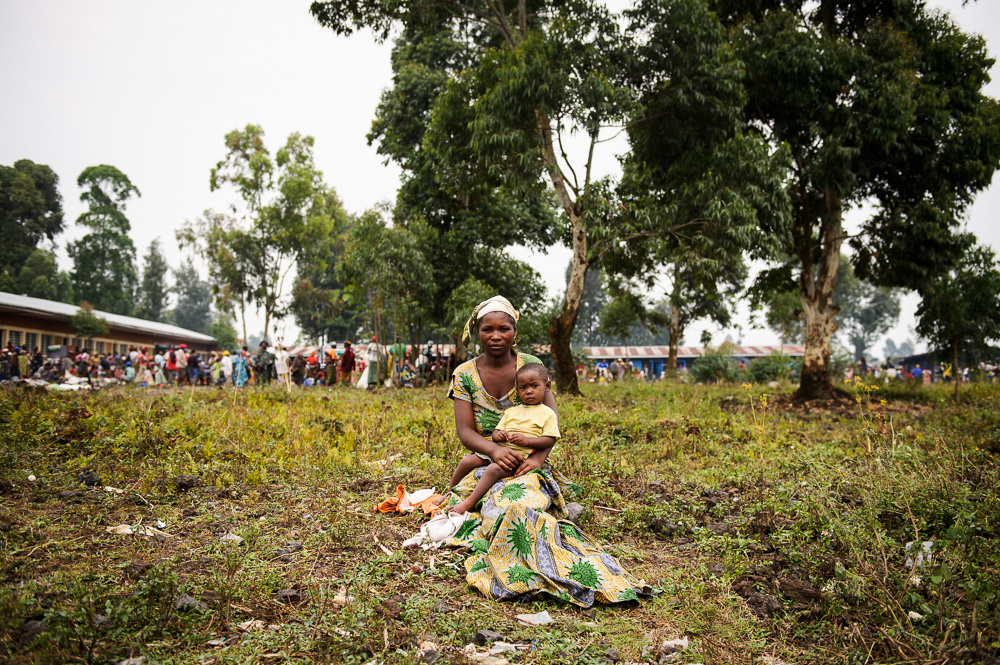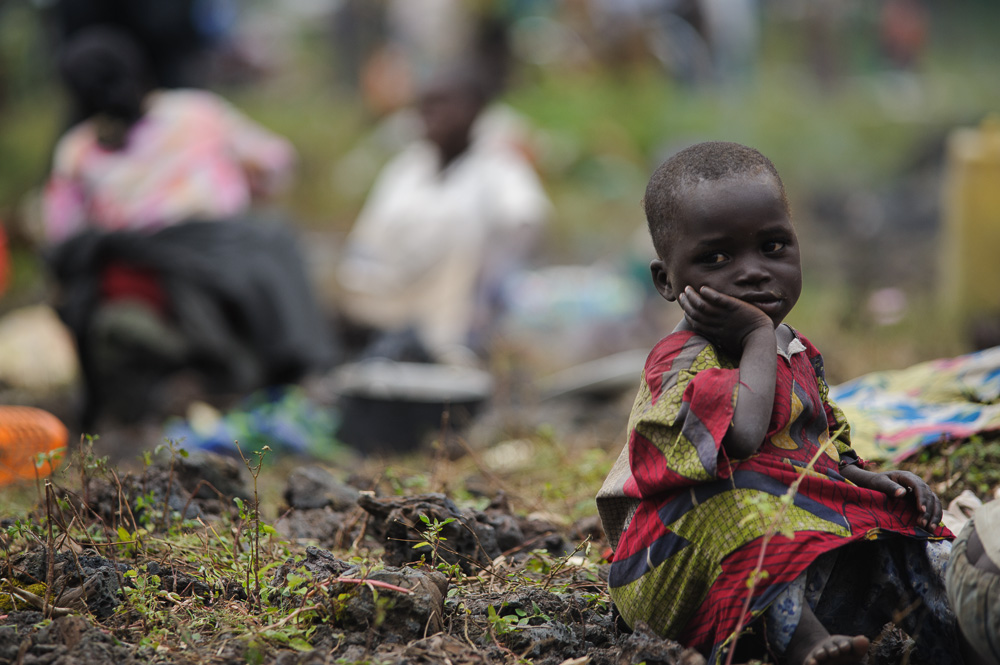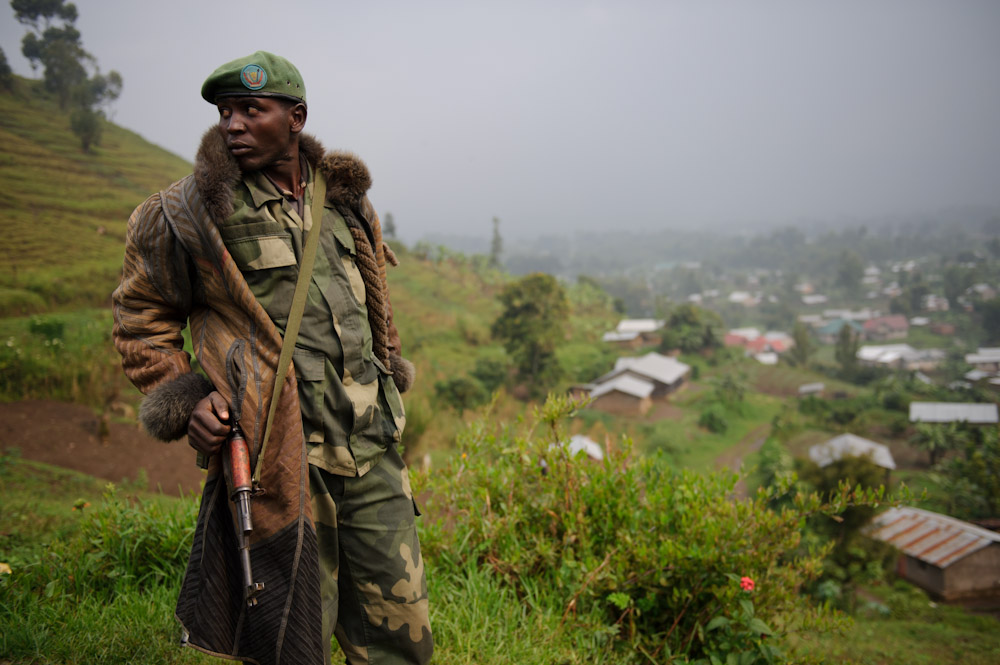From the town of Bunagana, straddling the Congo-Uganda border in DRC’s restive North Kivu province, the sound of a bomb exploding can be heard from a distant hillside. It is in these lush green hills that ex-CNDP rebels, now organised under the name M23 — le Movement du 23 mars — are engaged in offensives and counter-offenses with the Congolese Armed Forces (FARDC).
Less than a week ago, the United Nations Stabilisation Mission for the Congo (MONUSCO) had established a temporary operating base manned by Indian peace-keepers in the town, under their mandate to protect civilians. But just a few hundred metres from their base, hundreds of people are crossing in and out of the porous border with Uganda, seeking refuge from the conflict whilst still returning to Bunagana for water, firewood and their belongings.
The previous week, the town had all but emptied and many doors still remain firmly padlocked shut, but some shops have reopened, and the main thoroughfare appears rather animated. The conflict, though, is disrupting people’s lives; a teacher in Bunagana says that she cannot afford to buy food - her income comes from pupils attending class, and right now, with shells and gunfire ripping through the landscape, there are none.
This afternoon, three hours after the bomb exploded on a hillside, heavy weapons fire ripped through the air in a village in Jomba, seemingly precipitating the heavy downpour that followed it. FARDC jeeps then burst out of the bush, carrying around sixty men as well as a large, truck-mounted automatic gun. The villages lining the route towards Bunagana have emptied, with clothes left unattended on washing lines and more padlocks sealing doors; the jeeps churned up the muddy road that drives straight through them, on their way to the next operation.
Less than a kilometre from where the jeeps emerged from the bush, a large contingent of foot soldiers march down the road, moving positions following the offensive. “Things are going well” said one, the morale of the whole detachment seemingly high.
A text-message partially received from the spokesman of the M23 rebels acknowledged an attack during the morning, but claimed that they had met the attack with a counter-offensive. Right now, it is impossible to assess the veracity of this message, nor their strength: isolated high in the hills, accessing them from Congo means crossing the front-line of the FARDC, something they are somewhat less than willing to allow.
In the meantime, the va-et-vient continues on the border, as people spend the night in neighbouring Uganda, ferrying their belongings in and out of the country. The chef du groupement says that people are living in deplorable conditions, often without food and shelter, and claims that three people have died since leaving their homes. As he sees it, either the army needs to chase out the rebels, or a peace needs to be negotiated. Until then, “it is my people that are the victims.”
























